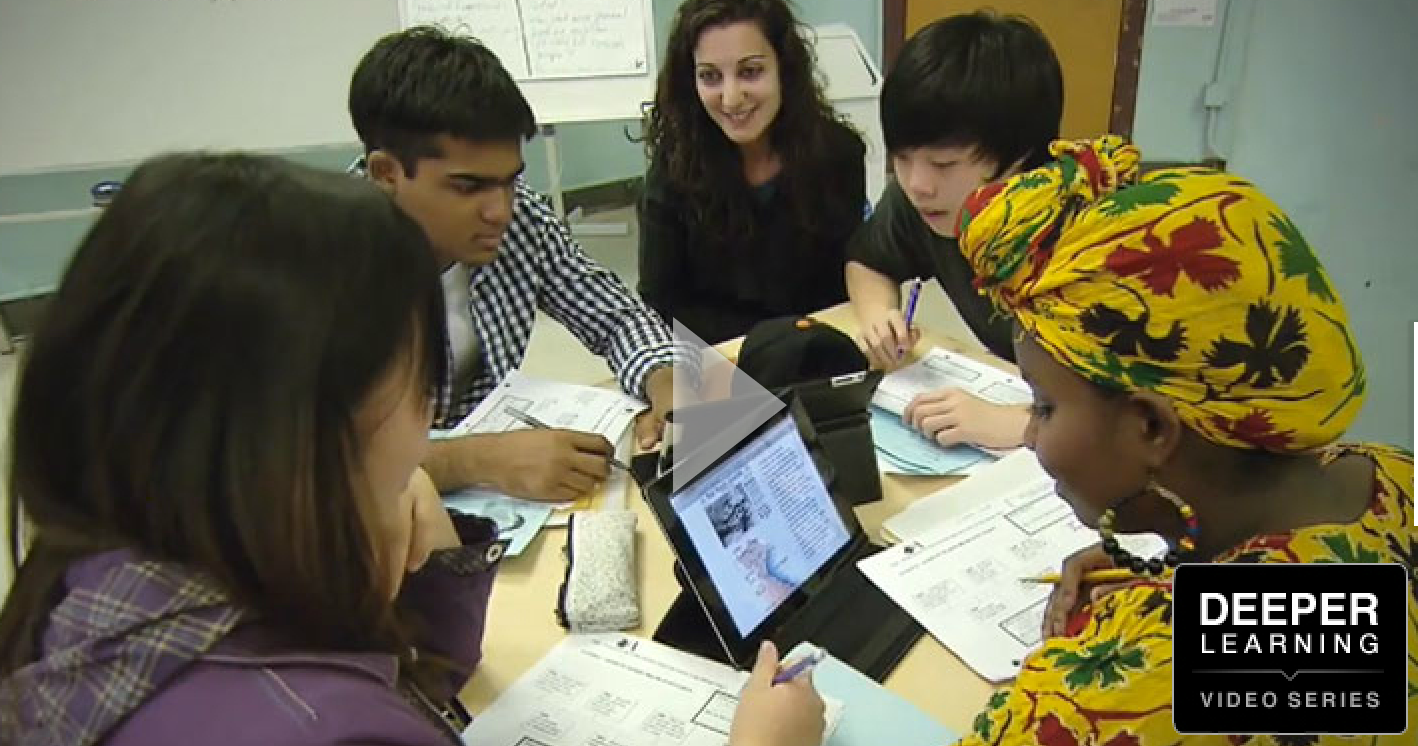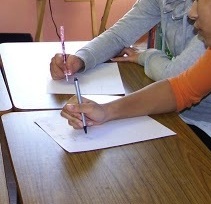Scaffolding Reading and Writing for ELLs
2. Standards-Friendly Scaffolding Techniques and Routines
The EQuIP rubric for lessons and units provides criteria to determine the quality and alignment of curriculum to Common Core State Standards. It is a tool that also aids in implementing those key shifts in the Common Core that are responsive to ELL and struggling learner needs while ensuring that all students' needs are met with the standards.
The scaffolding techniques and routines used throughout the module lessons are based on a body of research taken from a number of sources, among them: the Institute of Education Sciences Practice Guide, Baker et al., 2014; August & Shanahan (2006) and Francis, Lesaux, & August (2006) on ELLs and home language instruction, the teaching of academic vocabulary, and content area literacy.
Oral and Written Language Instruction Integration Into Content Area Teaching
Oral and written language scaffolding and integration techniques include the research of August, Branum-Martin, Cardenas-Hagan, & Francis (2009), Brown, Ryoo, & Rodriquez (2010),  Ryoo (2009), Silverman & Hines (2009), Vaughn et al. (2009). Short videos, visuals, and graphic organizers are among the strategic techniques used to anchor instruction and help students make sense of content. Equally important is the explicit teaching of content-specific academic vocabulary above-and-beyond ELA instruction, to include all content areas equally (Baker et al., 2014). Overarching questions are used to clarify and deepen understand as vocabulary applies to the text. All lessons include partner talk activities and constructed response to narrative, informational/explanatory, and arguments in text and anchor text.
Ryoo (2009), Silverman & Hines (2009), Vaughn et al. (2009). Short videos, visuals, and graphic organizers are among the strategic techniques used to anchor instruction and help students make sense of content. Equally important is the explicit teaching of content-specific academic vocabulary above-and-beyond ELA instruction, to include all content areas equally (Baker et al., 2014). Overarching questions are used to clarify and deepen understand as vocabulary applies to the text. All lessons include partner talk activities and constructed response to narrative, informational/explanatory, and arguments in text and anchor text.
Provide Regular, Structured Opportunities to Read for Multiple Purposes
As per the Common Core Standards, ELLs must read for multiple purposes. This is also research-supported practice (August & Shanahan, 2008) whereshort supplementary text is used to support cultural, historical, or thematic ideas in text in order to bring up their requisite background knowledge crucial for comprehension. As they read to answer questions about key ideas and detail, they reread for close reading, vocabulary, to analyze structure, deepen understanding or to clarify understanding (revisit any text not fully understood).
Provide Regular, Structured Opportunities to Write
In most lessons all writing is anchored in the text students are assigned to read, with an  additional focus on academic language through the use of questions. Students speak to and engage with peers prior to writing to clarify understanding, brainstorm, answer questions, or collaborate on ideas prior to organizing their thoughts. All writing requires the use of scaffolds to include glossaries, word banks, sentence frames, sentence starters, and graphic organizers. The entire writing process is embraced, beginning with drafting, advancing to peer review, polishing of pieces, and publication. All lessons invoke the pre, during, and post-assignment process to aid in differentiating, scaffolding, and in drawing the data needed to continue planning and differentiating.
additional focus on academic language through the use of questions. Students speak to and engage with peers prior to writing to clarify understanding, brainstorm, answer questions, or collaborate on ideas prior to organizing their thoughts. All writing requires the use of scaffolds to include glossaries, word banks, sentence frames, sentence starters, and graphic organizers. The entire writing process is embraced, beginning with drafting, advancing to peer review, polishing of pieces, and publication. All lessons invoke the pre, during, and post-assignment process to aid in differentiating, scaffolding, and in drawing the data needed to continue planning and differentiating.
What follows are lesson examples that include all of the aforementioned scaffolding techniques, and more. The original lessons are posted on the EngageNY website at www.engageny.org
Example: Background Knowledge (AIR New Activity 2 for Work Time)
|
AIR Additional Supports Students look at a map and picture of the Mississippi and read a brief description of the river; they watch a short video clip about the river; they answer questions about both to develop background knowledge. Providing a glossary offers additional support for all students. Sentence frames support ELLs at entering (EN) and emerging (EM) levels of proficiency. Sentence frames support ELLs at transitioning (TR) levels of proficiency. |
||
|
AIR Instructions for Teachers
|
||
|
AIR Instructions for Students
|
||
|
The Mississippi River |
Glossary |
|
|
The Mississippi River is the largest river in the United States. The part of the Mississippi River from its headwaters to St. Louis is called the Upper Mississippi. East Moline, Chad’s hometown, is located on the Upper Mississippi. The Mississippi River has experienced a lot of pollution, and there is a lot of trash in the river and along the shoreline. |
headwaters—the beginning of a river upper—higher in place is located on—is next to pollution—poisons, waste, or other things that hurt the environment shoreline—the place where land and water meet |
|
|
Questions
|
||